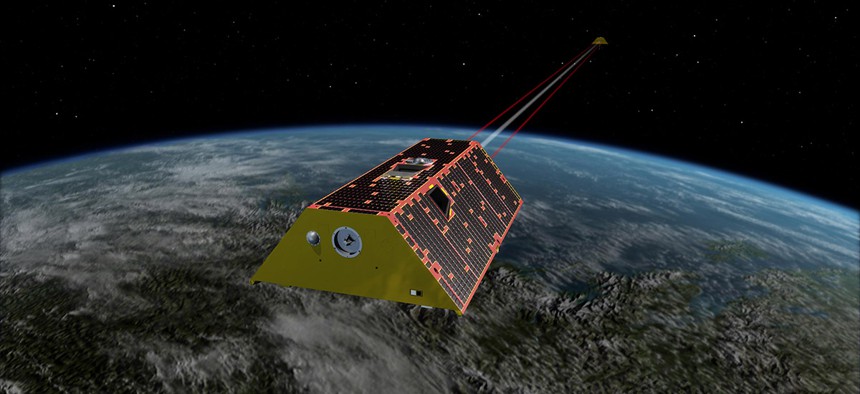NASA Turns on the Lasers on a Pair of Climate Satellites

The twin spacecraft of the Gravity Recovery and Climate Experiment Follow-On (GRACE-FO) mission. NASA JPL
These lasers are the equivalent of a pair of walkie-talkies.
Pew! Pew! Pew!
Perhaps the thought of lasers in space evoke an epic sci-fi movie battle, but NASA recently switched on a pair of lasers for an entirely different purpose.
These lasers, also known as experimental laser ranging interferometer (LRI) instruments, belong to the two Gravity Recovery and Climate Experiment Follow-On satellites, or GRACE-FO, which NASA designed to monitor the Earth's climate, Engadget reports.
Instead of being used for fighting, cutting or pointing out the important parts of a presentation, the lasers allow the twin satellites to find each other and stay connected as they both orbit around the Earth at a speed of 16,000 miles an hour.
SpaceX initially launched the GRACE-FO satellites into orbit in May.
"The LRI is a breakthrough for precision distance measurements in space. It's the first inter-spacecraft laser interferometer and the culmination of about a decade of NASA- and German-funded research and development," said Kirk McKenzie, manager of the LRI instrument at NASA's Jet Propulsion Laboratory.
The lasers will also track the changes in the distance between the GRACE-FO, and how that distance is affected by gravitational anomalies. NASA scientists will then take that data and apply it to their monitoring of the Earth's ice sheets thinning and sea levels rising.
NEXT STORY: MIT's New Cheetah Robot Navigates While 'Blind'



